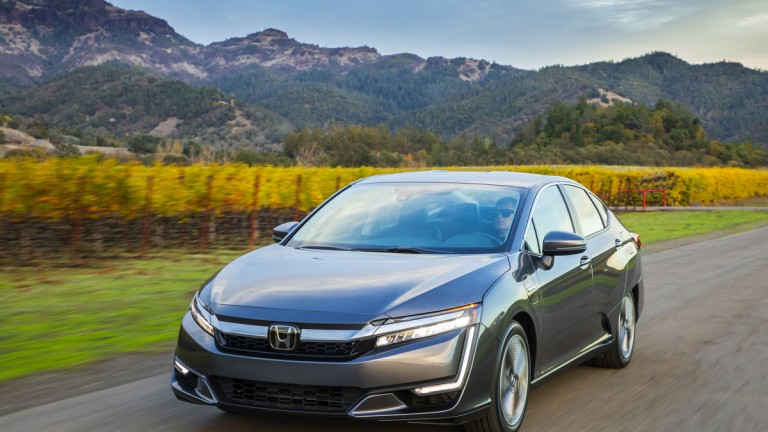The agreement comes as the White House works to roll back Obama-era rules that could avoid billions of tons of climate emissions.
The deal: Following weeks of secret discussions, Ford, Honda, Volkswagen, and BMW of North America have struck a deal with California, as first reported by the Washington Post, to boost the average fuel efficiency of their fleets to 50 miles per gallon by 2026. In turn, California, the nation’s most populous state, will allow the four major manufacturers to continue selling their vehicles there.
The deal is a major rebuke to the Trump administration’s efforts to unravel Obama-era auto regulations. Since automakers want to avoid making different cars for different markets, the agreement could serve as a de facto federal standard for companies representing some 30% of the US market.
The background: The White House had been finalizing an effort to freeze requirements at 37 miles per gallon and revoke California’s long-standing ability to set its own rules under the Clean Air Act. The state, however, has said it will continue to enforce stricter standards.
What drove the deal? In a statement, the automakers made clear that their higher priority is regulatory certainty. The companies want to produce a single national fleet, and avoid abiding by different rules in different regions. Notably, Canada recently said it will set its fuel-efficiency requirements in line with California standards rather than US federal standards.
The agreement allows the companies one extra year and one mile per hour less than what was required under the earlier deal with the Obama administration.
What’s it mean for emissions? Transportation is the biggest US source of greenhouse-gas pollution. Experts have said that the Trump administration’s effort to roll back fuel-efficiency standards could deliver one of the biggest blows to the nation’s effort to reduce emissions. An earlier EPA analysis found that tightening standards would eliminate nearly two billion tons of greenhouse gas over the lifetime of vehicles produced in model years 2017 to 2025.
What’s next? Mary Nichols, head of the California Air Resources Board, told the newspaper that the deal could be an “olive branch” to the Trump administration and said she hopes the federal government signs on. It remains to be seen whether other automakers will join the pact.

